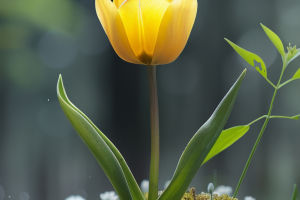When it comes to sunflowers, people often first think of their bright yellow flowers and distinctive growth habits.
However, sunflowers have much more to offer than meets the eye. They possess numerous striking features, ranging from their biological characteristics to their diverse cultural symbolism.
In this article, we will explore seven unique characteristics of sunflowers, revealing the deeper stories and meanings behind this beautiful plant.
1. Growth Habit and Morphology
Sunflowers are typical heliotropic plants, meaning they exhibit a behavior where mature flower heads face east and follow the sun throughout the day. This phenomenon, known as heliotropism, orients the flower towards the sun, symbolizing its reverence and pursuit of sunlight.
2. History and Origins
Originating from North America, sunflowers were essential food sources and held sacred by indigenous peoples. Introduced to Europe by the Spanish, sunflowers quickly spread globally. In Europe, they became common garden features and inspired countless artists and poets.
3. Economic and Agricultural Significance
Beyond aesthetics and cultural symbolism, sunflowers play a crucial role in modern agriculture. Their seeds are a highly nutritious source of oil, widely used in food processing, cooking, and cosmetics.
Additionally, sunflowers are excellent sources of nectar, attracting bees and other beneficial insects, thus promoting ecological balance in crop fields.
4. Cultural and Symbolic Meaning
In many cultures, sunflowers symbolize loyalty, longevity, endurance, and sunshine. In Greek mythology, sunflowers are associated with the sun god Apollo, symbolizing light and knowledge. In folklore, sunflowers are often seen as symbols of good luck and bountiful harvests.
5. Scientific Research and Evolution
From a scientific perspective, sunflowers exhibit fascinating biological characteristics. They feature large flower heads composed of thousands of tiny florets, each equipped with mechanisms for pollinating insects.
Sunflower leaves and stems are also adapted with specialized structures to withstand strong winds, allowing them to thrive in challenging environments.
6. Artistic Expression
Sunflowers not only hold importance in real-life settings but also feature prominently in artworks and literary works. Vincent van Gogh's famous series of paintings "Sunflowers" is one of the most iconic examples, capturing the beauty and vitality of sunflowers through artistic expression.
7. Environmental Impact
Lastly, sunflowers play a significant role in environmental conservation. As efficient plants capable of growing in polluted soils, they contribute to soil remediation and ecological restoration efforts. Additionally, sunflowers are drought-tolerant plants, offering positive implications for climate change adaptation.
In summary, sunflowers are more than just beautiful flowers; they embody rich cultural, economic, and ecological significance. Their characteristics and symbolic meanings transcend time and space, leaving a profound imprint on the history of human civilization. Therefore, understanding and appreciating the multifaceted nature of sunflowers is not only about recognizing the plant itself but also about delving into the complex relationship between humanity and nature.


